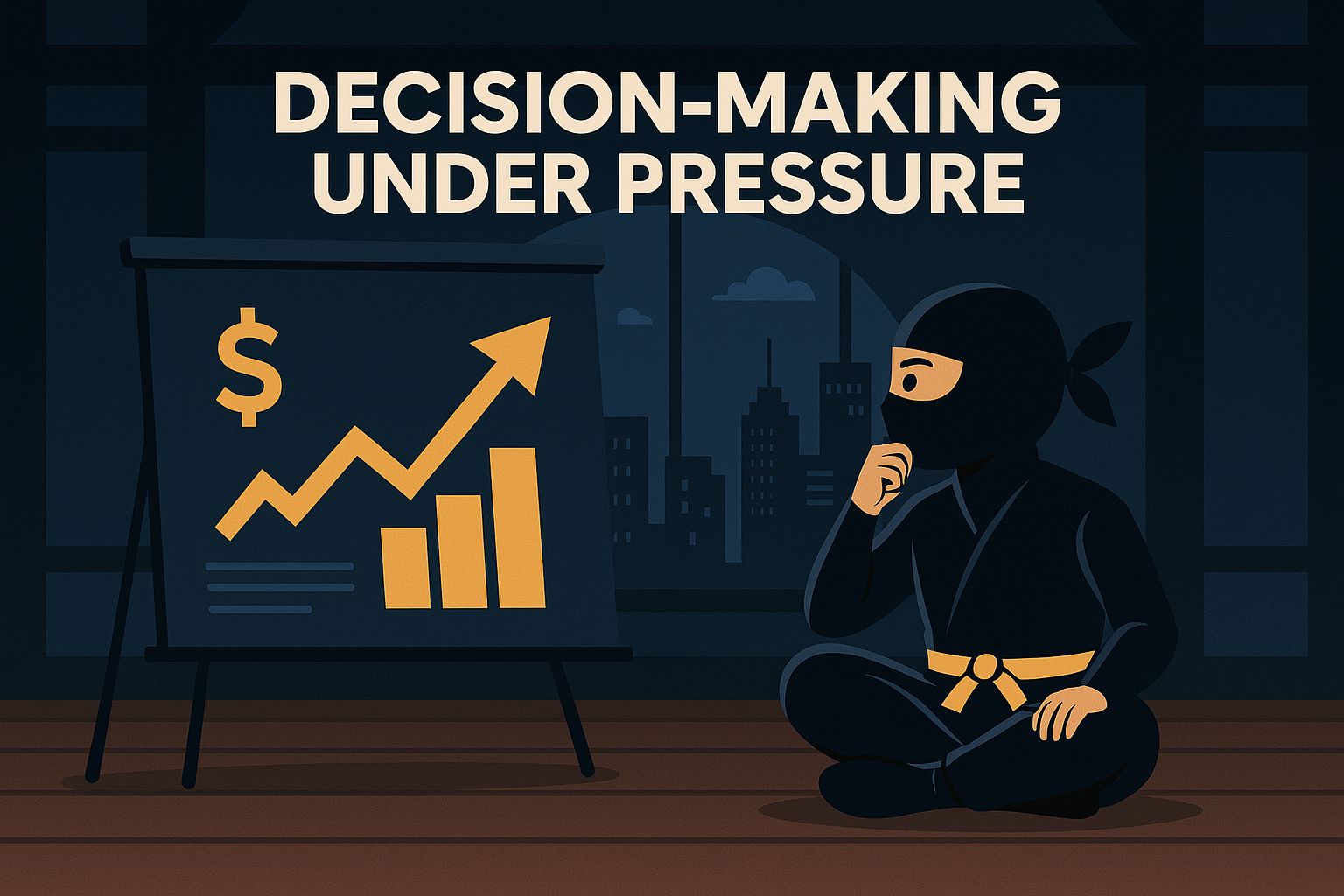
Make confident business decisions when it matters. Learn frameworks for decision-making under pressure and how to act fast without losing clarity.
Why Decision-Making Under Pressure Matters
Business rarely gives you perfect conditions to act. Crises emerge, markets shift and clients demand answers yesterday. The ability to master decision making under pressure separates leaders who panic from those who calmly steer the ship. In the dojo, you train reflexes so that in combat, instinct takes over. The same principle applies to business leadership.
The Cost of Hesitation
Analysis paralysis is a silent killer. Waiting too long to act often means opportunities slip away or problems escalate beyond control. Founders who freeze lose ground to faster competitors. That does not mean recklessness – it means making the best call with available data, then adjusting rapidly as new information emerges.
A Simple Framework for High-Pressure Decisions
When pressure rises, clarity comes from a simple process. One effective framework is:
- Define the problem clearly: Strip emotion and state the issue in one sentence.
- List realistic options: Brainstorm two to three viable paths forward.
- Weigh impact vs reversibility: Which choice has the biggest upside, and can it be reversed if wrong?
- Decide: Act quickly. Delay kills momentum.
- Review: Capture lessons so the team improves next time.
This keeps decisions sharp and prevents endless spirals of debate.
Time Boxes and Thresholds
One way to stay decisive is to set time boxes – limits on how long you will spend gathering information. If a choice needs to be made in 24 hours, assign two hours to research, two hours to consult stakeholders and the rest to deliberate and act. Define thresholds for “good enough” data. Perfection is impossible under pressure, but progress compounds.
Classify Risks
Not all decisions carry equal weight. Categorise them to manage energy wisely:
- Green: Low-risk, reversible. Make these quickly and move on.
- Amber: Moderate risk, needs peer input. Schedule a short discussion.
- Red: High stakes, irreversible. Take time, involve leadership and document assumptions.
This triage prevents overthinking small matters and underestimating big ones.
Keep Communication Clear
In high-pressure situations, teams look to leaders for clarity. Share the decision, the reasoning and the next steps openly. Even if the call is tough, transparency builds trust. Combine concise messaging with empathy so the team feels guided, not commanded.
Learning From Every Decision
Every pressured decision is a training exercise. After the dust settles, hold a quick review: what assumptions proved correct, what failed, and what will you do differently? This discipline compounds over time, sharpening reflexes for the next test. In martial arts, reflection turns raw experience into mastery. In business, reflection turns stressful calls into growth.
Tools and Support Systems
Pressure does not have to mean isolation. Equip yourself with systems that provide real-time information and guidance:
- Business Solutions for strategic frameworks and planning.
- Advanced IT Support to ensure data and communication systems do not fail when needed most.
- Identity & Branding to reinforce credibility when making bold moves.
These supporting pillars give you confidence to act decisively when others hesitate.
Conclusion: Calm Action Wins
Mastering decision making under pressure is about discipline, not bravado. Use simple frameworks, classify risks, enforce time boxes and learn from every call. Communicate with clarity and build support systems so you are never flying blind. The dojo teaches that calm action under pressure is the mark of a true warrior. In business, it is the mark of a leader who endures and thrives.



